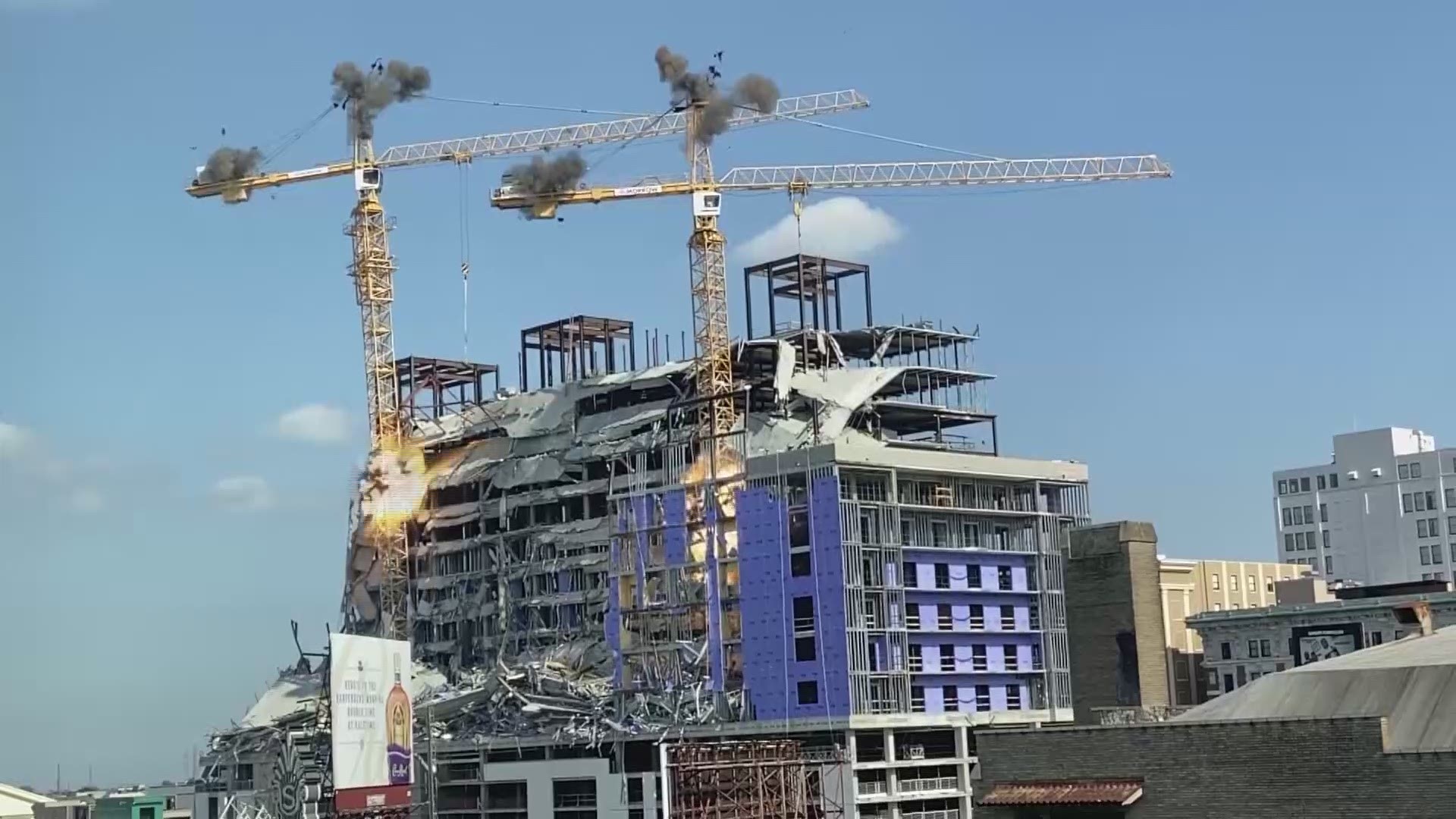NEW ORLEANS — Demolitionists Sunday brought down a pair of unstable construction cranes that were towering over the site of the Hard Rock Hotel collapse.
The explosives went off around 2:40 p.m. Sunday, days after the city had originally planned to demolish the cranes.
Footage of the explosion from multiple angles shows a large piece of the crane impaling itself like a spear into the pavement on Rampart Street as a plume of concrete powder erupts from the building site.
Part of the other crane, which was closer to Canal Street, appears to be suspended precariously over Canal Street.
It does not appear that the explosions caused major structural damage to the already weakened building.
City Councilmember Jason Williams told WWL-TV that the piece of crane impaled in Rampart Street did not damage the Saenger Theater or the New Orleans Athletic Club and did not break any utility lines.
The city dodged a bullet when the crane didn't damage any underground infrastructure, he said.
"That was the biggest issue facing the city of New Orleans," Williams said. "It was hovering above Rampart Street, which, just underneath the asphalt is a main gas line that feeds the French Quarter. So had that crane come down on its own because of weather, because of rain, it could have damaged that gas line. It could have been a huge issue."
City officials later said three windows at the Saenger theater were blown out and a water line was damaged by the falling crane. But the Sewerage & Water Board was already prepared to redirect pressure around the break, according to city officials.
At a press conference about two hours after the demolition, Mayor LaToya Cantrell said the operation was a success.
"We know that we are safer now," she said.
The next step, she said, was recovering the bodies of the two workers who were killed in the collapse: 63-year-old Jose Arreola and 36-year-old Quinnyon Wimberly.
"That's what it's about now, recovering our people who are still in that building," Cantrell said.
After that? Demolition, she said.
"That's the next mission we will be faced with."
New Orleans Fire Chief Tim McConnell was blunt about the explosion.
"I do not think it could have gone much better," he said. "It damaged a sewer line. That was the least of our worries, we had a plan to reroute it. That is really, really good."
He said engineers would work through the night to assess the structure for new damage caused by the blasts, but emphasized that it was much safer now than it was before the cranes were brought down.
"The building collapsed. It is still a dangerous building," he said. "(The demolition) may have made it worse, but not worse than if it came down in the middle of Rampart or Canal street."
See other Hard Rock Hotel collapse stories:
► Get breaking news from your neighborhood delivered directly to you by downloading the new FREE WWL-TV News app now in the IOS App Store or Google Play.

